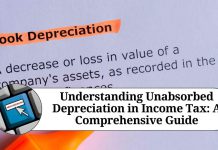In the world of business, transactions often involve multiple goods or services that are sold together as a package. This is known as a composite supply, where a combination of goods or services are supplied together to fulfill a single purpose or function. Understanding what constitutes a composite supply is important for businesses and consumers alike, as it has implications for tax and pricing structures, as well as consumer rights.
Definition of Composite Supply
A composite supply is a supply of two or more goods or services that are naturally bundled or sold together to fulfill a single purpose. In a composite supply, the primary item is considered the principal supply, while the other items are considered ancillary supplies. The primary item is the one that gives the composite supply its essential character, and the ancillary items are those that support the primary item in achieving its intended purpose.
For example, a hotel package that includes accommodations, meals, and recreational activities is considered a composite supply. The primary item is the accommodation, while the meals and activities are ancillary supplies that support the accommodation in fulfilling its purpose of providing a complete vacation experience.
Implications of Composite Supply
The classification of a transaction as a composite supply has implications for tax and pricing structures. In some countries, such as India, the tax rate on a composite supply is determined based on the primary item in the bundle. This means that if the primary item is taxed at a higher rate than the ancillary items, the entire bundle will be taxed at the higher rate.
For consumers, understanding composite supply can help them make informed purchasing decisions. By recognizing which items in a bundle are primary and which are ancillary, consumers can determine whether they are paying a fair price for the primary item, and whether they are receiving adequate value for the ancillary items.
Examples of Composite Supply
Some common examples of composite supply include:
- Restaurant meals that include both food and drinks
- Vacation packages that include accommodations, meals, and activities
- Software packages that include both the software and support services
- Gym memberships that include access to equipment, classes, and personal training sessions
In each of these examples, the primary item is the one that provides the essential purpose of the bundle, while the ancillary items support the primary item in fulfilling its intended purpose.
Conclusion
Composite supply is a common practice in business transactions, where multiple goods or services are bundled together to fulfill a single purpose. Understanding what constitutes a composite supply, and the implications of this classification, is important for businesses and consumers alike. By recognizing which items in a bundle are primary and which are ancillary, consumers can make informed purchasing decisions, while businesses can ensure they are complying with tax and pricing regulations.
Read more useful content:
- section 145 of income tax act
- section 10e of income tax act
- section 9 of the income tax act
- section 94b of income tax act
- section 206aa of income tax act
Frequently Asked Questions (FAQs)
Q: What is composite supply?
A: Composite supply refers to a combination of two or more goods or services that are naturally bundled or sold together to fulfill a single purpose. In a composite supply, the primary item is considered the principal supply, while the other items are considered ancillary supplies.
Q: What is the primary item in a composite supply?
A: The primary item is the one that gives the composite supply its essential character and is considered the principal supply. It is the item that fulfills the main purpose of the bundle.
Q: What are ancillary supplies in a composite supply?
A: Ancillary supplies are items that support the primary item in achieving its intended purpose. These items are sold along with the primary item as a bundle.
Q: What are some examples of composite supply?
A: Some examples of composite supply include restaurant meals that include both food and drinks, vacation packages that include accommodations, meals, and activities, software packages that include both the software and support services, and gym memberships that include access to equipment, classes, and personal training sessions.
Q: What are the implications of composite supply for tax purposes?
A: In some countries, such as India, the tax rate on a composite supply is determined based on the primary item in the bundle. This means that if the primary item is taxed at a higher rate than the ancillary items, the entire bundle will be taxed at the higher rate.
Q: How does understanding composite supply help consumers?
A: Understanding composite supply can help consumers make informed purchasing decisions. By recognizing which items in a bundle are primary and which are ancillary, consumers can determine whether they are paying a fair price for the primary item and whether they are receiving adequate value for the ancillary items.
Q: How does understanding composite supply help businesses?
A: Understanding composite supply is important for businesses as it helps them comply with tax and pricing regulations. By recognizing which items in a bundle are primary and which are ancillary, businesses can ensure they are pricing their products and services correctly and complying with applicable tax laws.




















